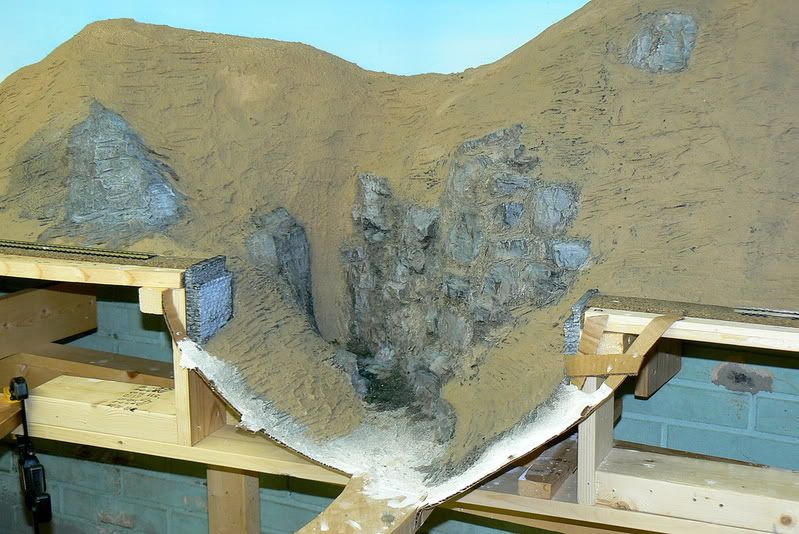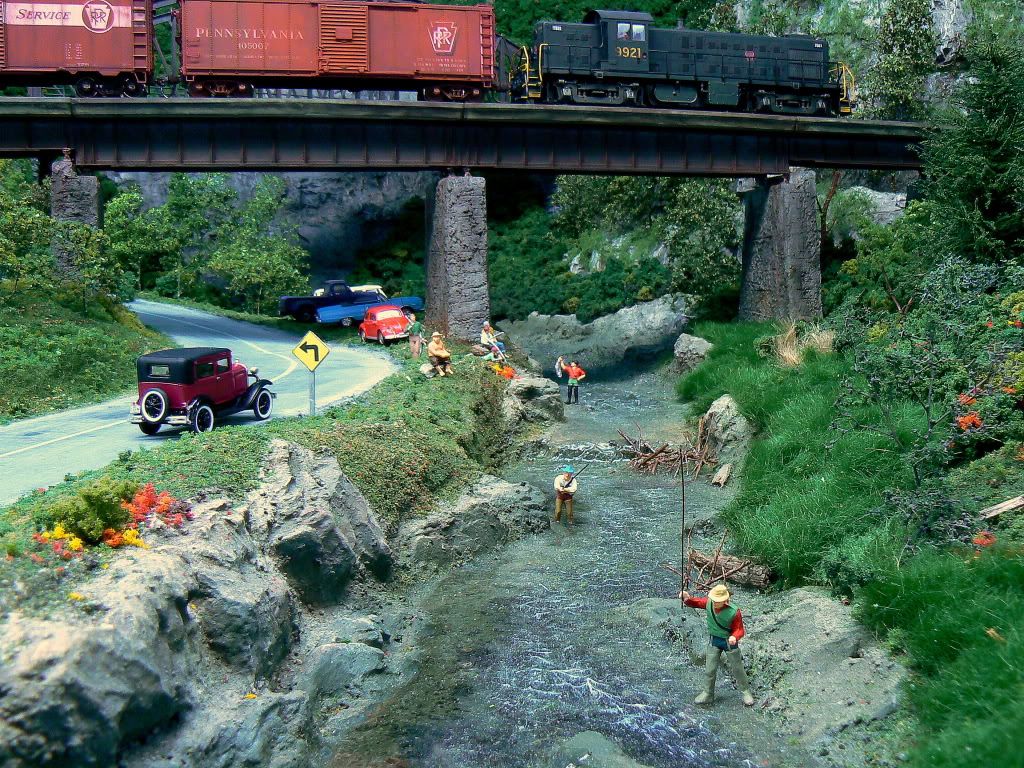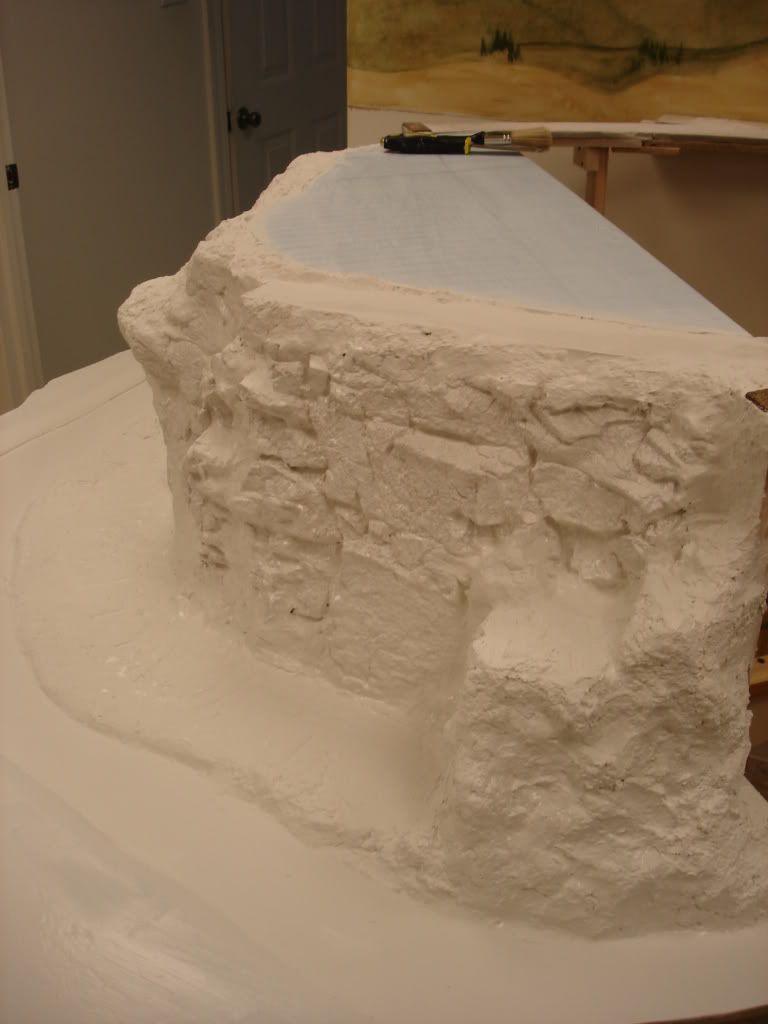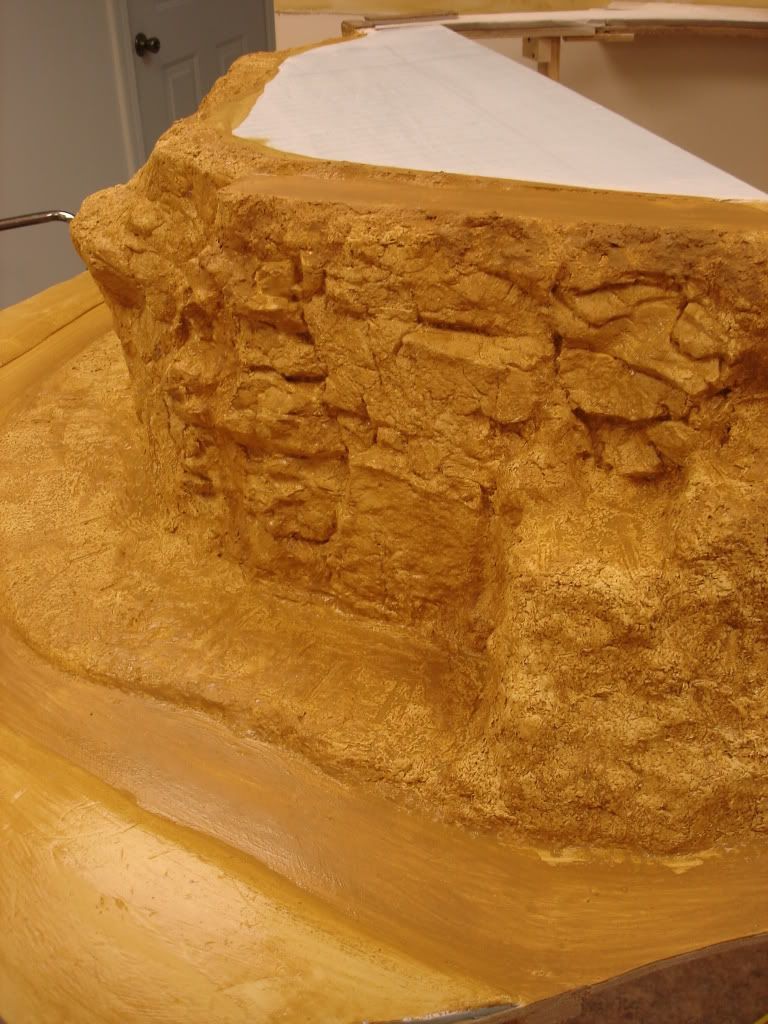Try experimenting with more water. Not much more, but a little. It sounds like you’re using it at the dry end of the mix.
I don’t bother measuring water into Sculptamold anymore, just run some water in on top of the dry, give it a couple of stirs, run some more H2O, repeat stir, until I get the texture I want. I use a stiff metal scraper to mix with, as you can just run the Sculptamold stuck on its blade off on the rim of the can.
When I’m stacking it into hills or other thick layered applications, I mix it towards the dry end. This helps these areas lose their water faster.
In places where I want a smooth surface, I mix it fairly wet, as this smooths easily and nicely.
Then there’s everything in between. Go ahead, try different things, it’s a very forgiving material to work with, unlike hydrocal and other plasters, etc, which require a pretty strict mixing ration with water.
Also, don’t mix too much at a time. If you find it getting stiff towards the end of the batch, it sometimes won’t stick or work as well. It’s definitely more of a PITA to work with then, anyway.
A couple of tips on embedding plaster castings. I usually just embed them in wet Sculptamold. I heard it helps to wet the plaster, but they seem to stick to the Sculptamold plenty good either way. Latex adhesive is probably overkill, but I won’t diss anyone who wants to use it.
Be careful when trying to color plaster and Sculptamold. If you tint it, the two substances take up the color differently. The idea of putting a base coat over the entire area is a good one, as that will help seal the surfaces so that they absorb at the same rate. However, the paint will keep the plaster from absorbing the tint, so you’ll lose some of the nice subtleties that can be created with tinting methods.



